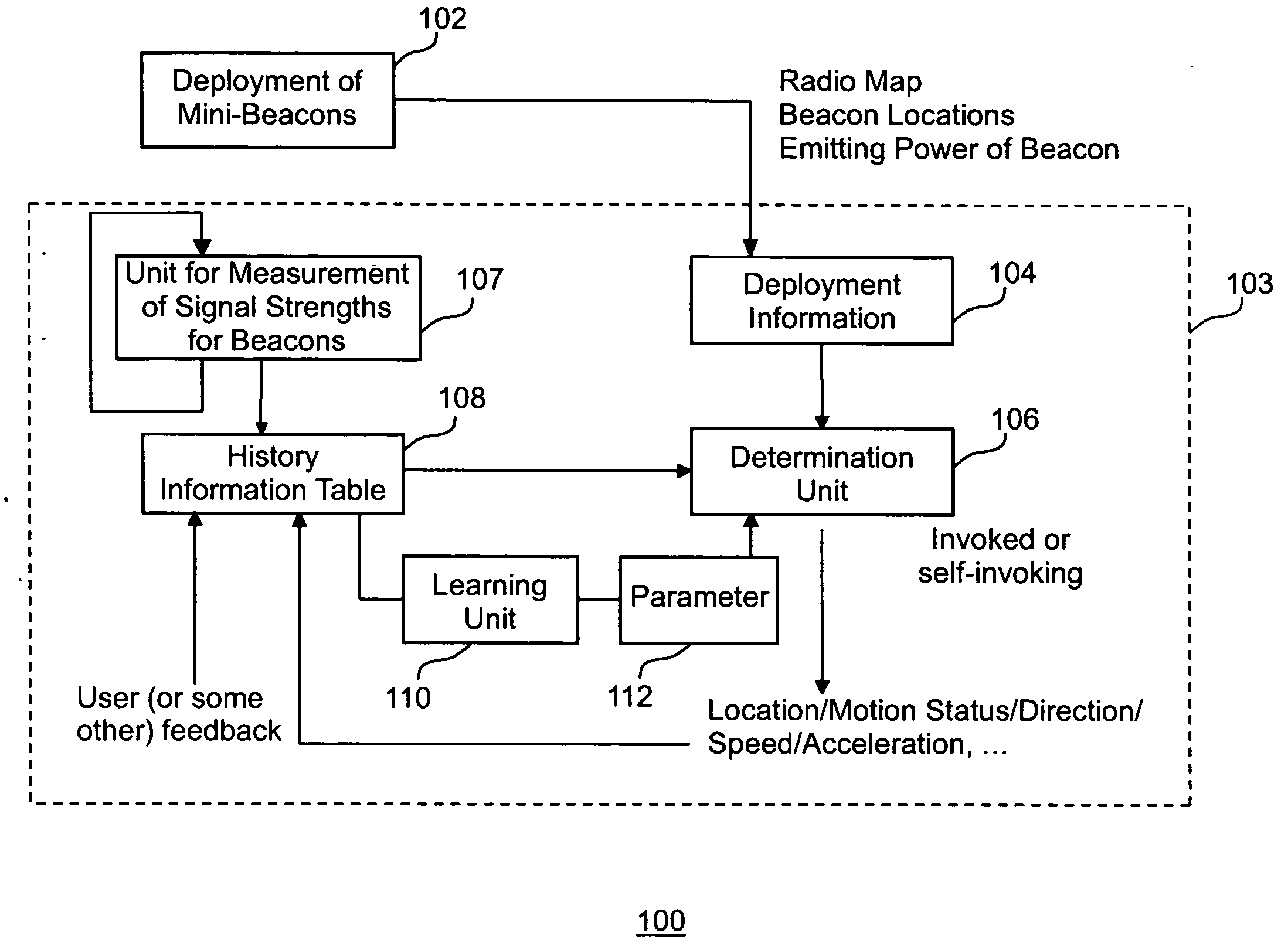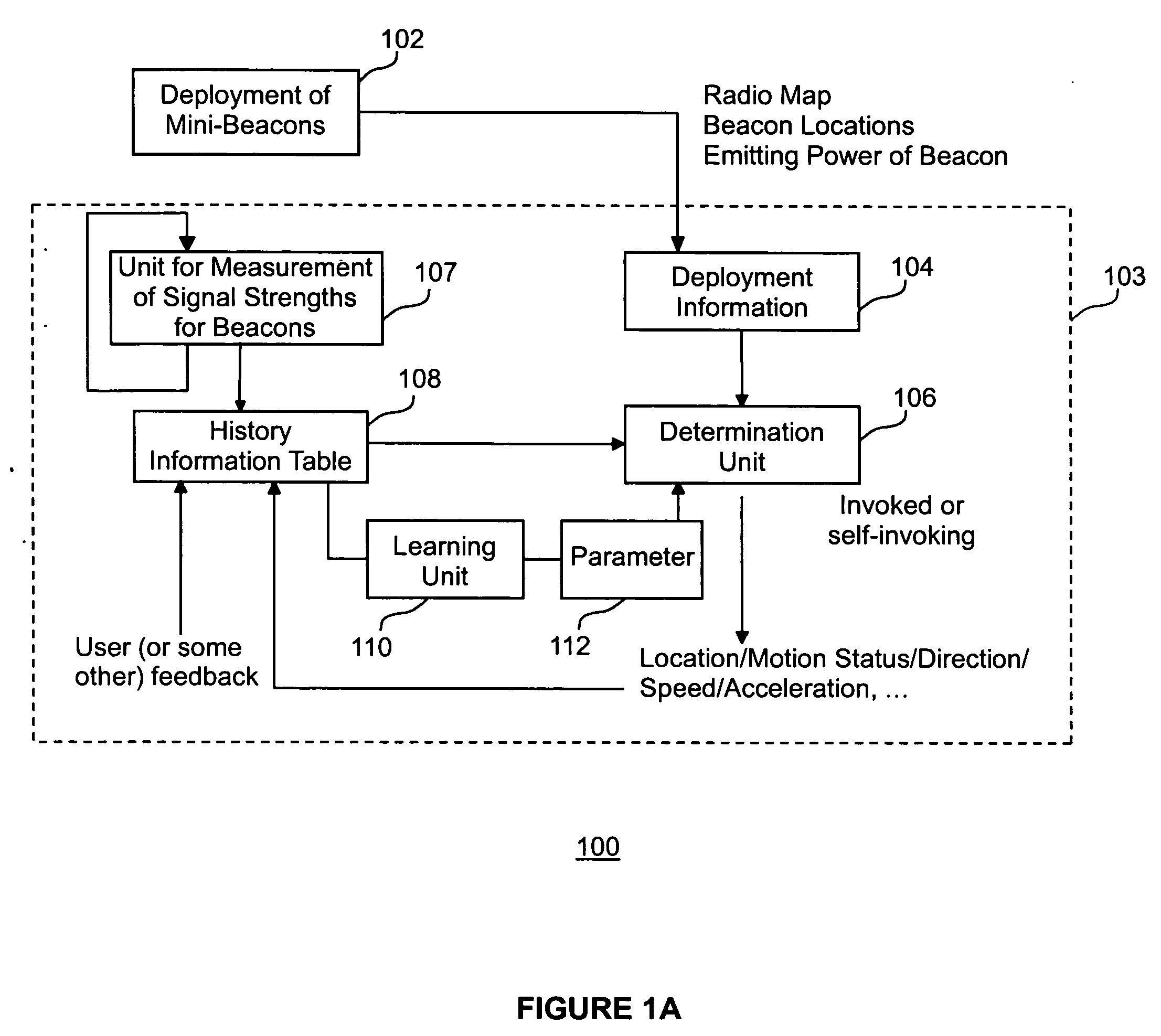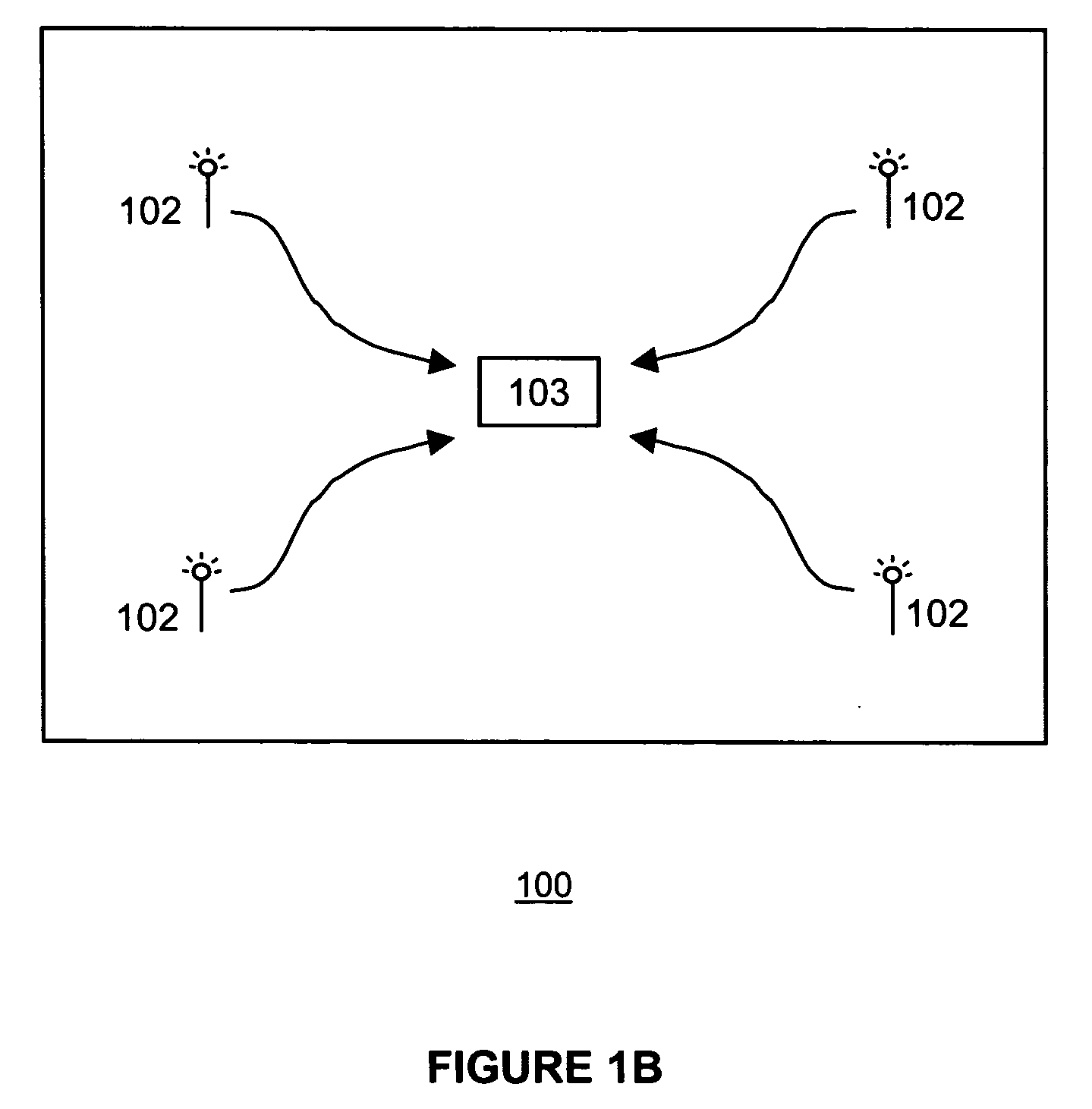Method and apparatus for location determination using mini-beacons
- Summary
- Abstract
- Description
- Claims
- Application Information
AI Technical Summary
Benefits of technology
Problems solved by technology
Method used
Image
Examples
Embodiment Construction
[0071] The present invention includes a basic location-determination apparatus, referred to as a mini-beacon apparatus that operates in conditions in which there is nearly-direct line-of-sight between a desired beacon and the client (or target device, such as a laptop computer or other stationary or hand-held device). A mini-beacon radiates a signal and this signal can be any form of wave for which the intensity can be measured at a target receiver. A client target device with a receiver for the signals will use a procedure based on the measured signal intensities from each beacon within range to determine proximity to the nearest beacon. The mini-beacons are intended to be used in local applications, such as determining in which room or cubicle a target client is currently located. The mini-beacon apparatus may include a 2-way communication device so that a beacon signal is transmitted in response to a request transmitted from a client. A mini-beacon device can also be a transmit-o...
PUM
 Login to View More
Login to View More Abstract
Description
Claims
Application Information
 Login to View More
Login to View More - R&D
- Intellectual Property
- Life Sciences
- Materials
- Tech Scout
- Unparalleled Data Quality
- Higher Quality Content
- 60% Fewer Hallucinations
Browse by: Latest US Patents, China's latest patents, Technical Efficacy Thesaurus, Application Domain, Technology Topic, Popular Technical Reports.
© 2025 PatSnap. All rights reserved.Legal|Privacy policy|Modern Slavery Act Transparency Statement|Sitemap|About US| Contact US: help@patsnap.com



